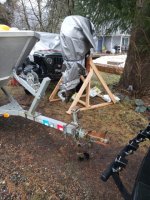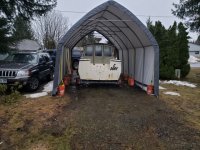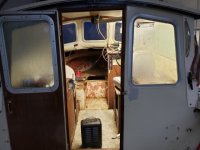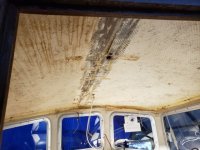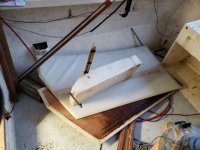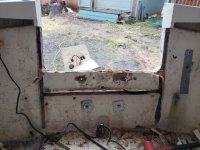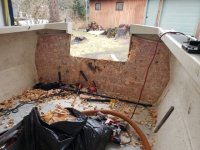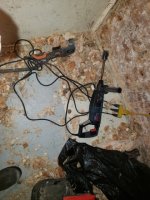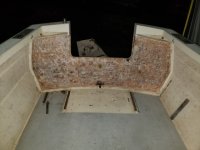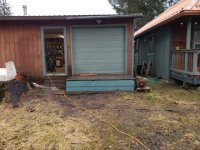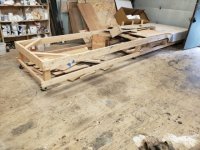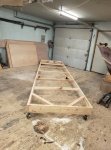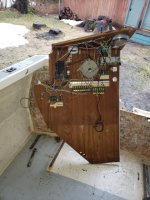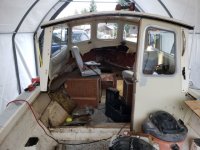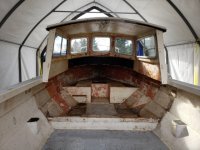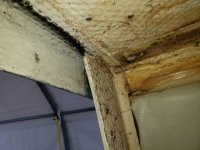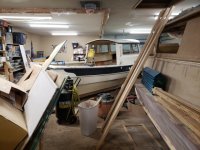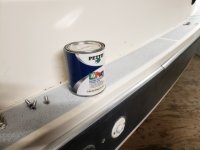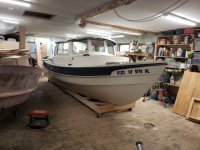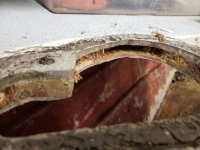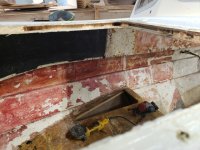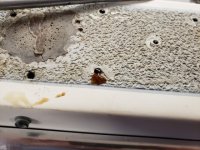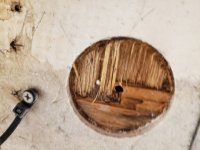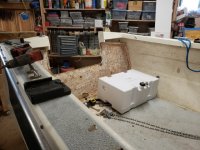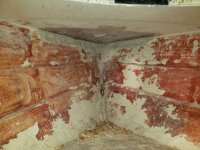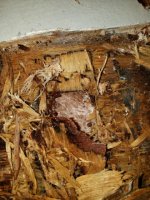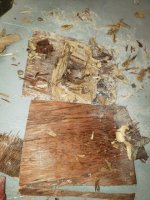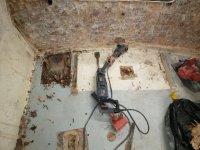thataway
Well-known member
- Joined
- Nov 2, 2003
- Messages
- 21,663
- Reaction score
- 40
- C Dory Year
- 2007
- C Dory Model
- 25 Cruiser
- Hull Identification Number
- DOR25652A707
- Vessel Name
- thataway
Your 14 days off and 12 hour days help with the time frame.
I had not seen your post last night just prior to mine—and I might have responded a bit differently, knowing your plan.
I wonder how the “teak” runners are adhered to the bottom? I suspect it is just more than screws. When we were building a 38’ fiberglass sailboat I had to do sharp bends with teak rub rails over the hull to deck joint. I did destructive testing of teak laminates (1/8” pieces in a jig to get the contour. Two part resorcinol glue remained superior to epoxy. But to the fiberglass, epoxy was the only choice. Some boats have had teak decks set in epoxy when being re-done’ (Taiwan built, which all leak).
At 2 AM I forget to ask if there was any evidence of the teak rub strips separating from the hull.
The other question is if there is delaminating of the plywood core from either the bottom outer surface or the inner surface of the boat’s bottom. If the boat has gone thru several freeze thaw cycles in AK, delaminating is more likely.
Also we have not heard from any of the many members who have this vintage hull designs especially in AK, to see what they found as the plywood core was checked by drilling holes to check for moisture and delaminating. Looking at the “our C Dorys” there are about 80 22 classic or anglers built by the end of 1982, and several are or were in the Juneau area. A number more were in AK.
By 1987 there appear to have been at least 317 of the22’s built. Thus there is a goodly data base to look at for plywood core problems. I doubt if many of these boats had been abused to the extend this one has—-or had an owner who was skilled and fast enough a worker to bring it back in a few short menorahs.
A big thanks for sharing your thought process, plans and then the photos of the work as it progresses. So often we have folks who do not have the skills which you posses, and things go slowly.
I had not seen your post last night just prior to mine—and I might have responded a bit differently, knowing your plan.
I wonder how the “teak” runners are adhered to the bottom? I suspect it is just more than screws. When we were building a 38’ fiberglass sailboat I had to do sharp bends with teak rub rails over the hull to deck joint. I did destructive testing of teak laminates (1/8” pieces in a jig to get the contour. Two part resorcinol glue remained superior to epoxy. But to the fiberglass, epoxy was the only choice. Some boats have had teak decks set in epoxy when being re-done’ (Taiwan built, which all leak).
At 2 AM I forget to ask if there was any evidence of the teak rub strips separating from the hull.
The other question is if there is delaminating of the plywood core from either the bottom outer surface or the inner surface of the boat’s bottom. If the boat has gone thru several freeze thaw cycles in AK, delaminating is more likely.
Also we have not heard from any of the many members who have this vintage hull designs especially in AK, to see what they found as the plywood core was checked by drilling holes to check for moisture and delaminating. Looking at the “our C Dorys” there are about 80 22 classic or anglers built by the end of 1982, and several are or were in the Juneau area. A number more were in AK.
By 1987 there appear to have been at least 317 of the22’s built. Thus there is a goodly data base to look at for plywood core problems. I doubt if many of these boats had been abused to the extend this one has—-or had an owner who was skilled and fast enough a worker to bring it back in a few short menorahs.
A big thanks for sharing your thought process, plans and then the photos of the work as it progresses. So often we have folks who do not have the skills which you posses, and things go slowly.

